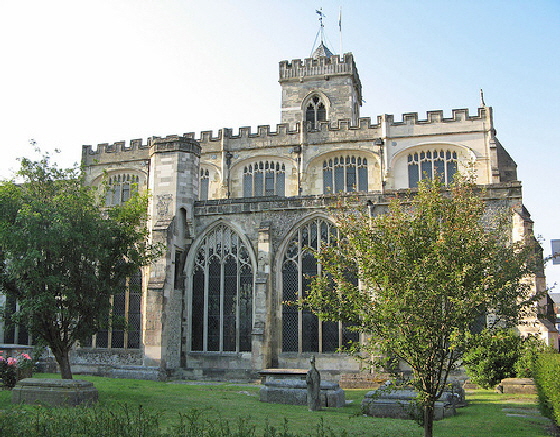|
Alphabetical List |
|
|
|
|
|
|
|
County List and Topics |
|
|
|
Please sign my Guestbook and leave feedback |
|
|
||||||||||||||||||||||
|
development phases that followed so, suffice to say that by the middle of the fifteenth century, what had begun as a place for the cathedral masons to worship had become a very large and richly-endowed church in a very sophisticated Perpendicular style. I think it is fair to say that this late Gothic style is at its best when deployed in this holistic way rather than as sometimes incongruous extensions to older structures. The tower was a little earlier, perhaps about of about 1400, and placed on the south side. The aisles were add in the late fifteenth century and that on the north side incorporated the wall of what was originally a detached tower dating from around 1400. Overall, it is an impressive sight within and without with its acres of glass and vast aisle arcades. |
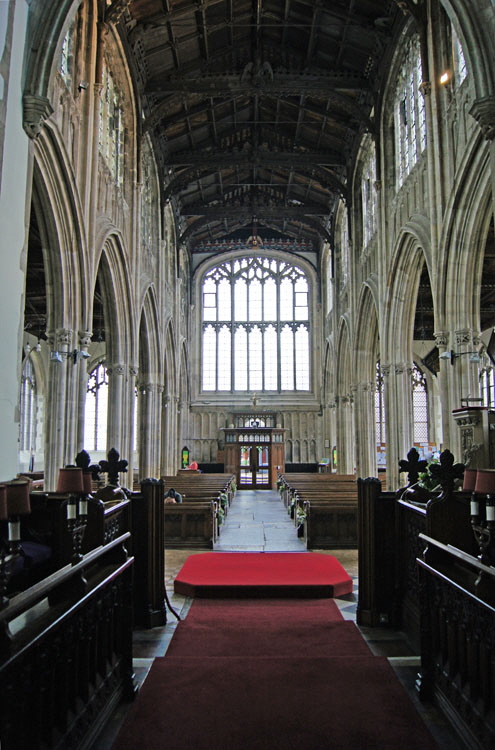 |
|||||||||||||||
 |
|||||||||||||||
|
Left and Right: Lookig respectively towards the east and west ends, we can see how far removed this sophisticated town church is from its country cousins. Everywhere there is light and space. Over the nave looms the doom painting. |
|||||||||||||||
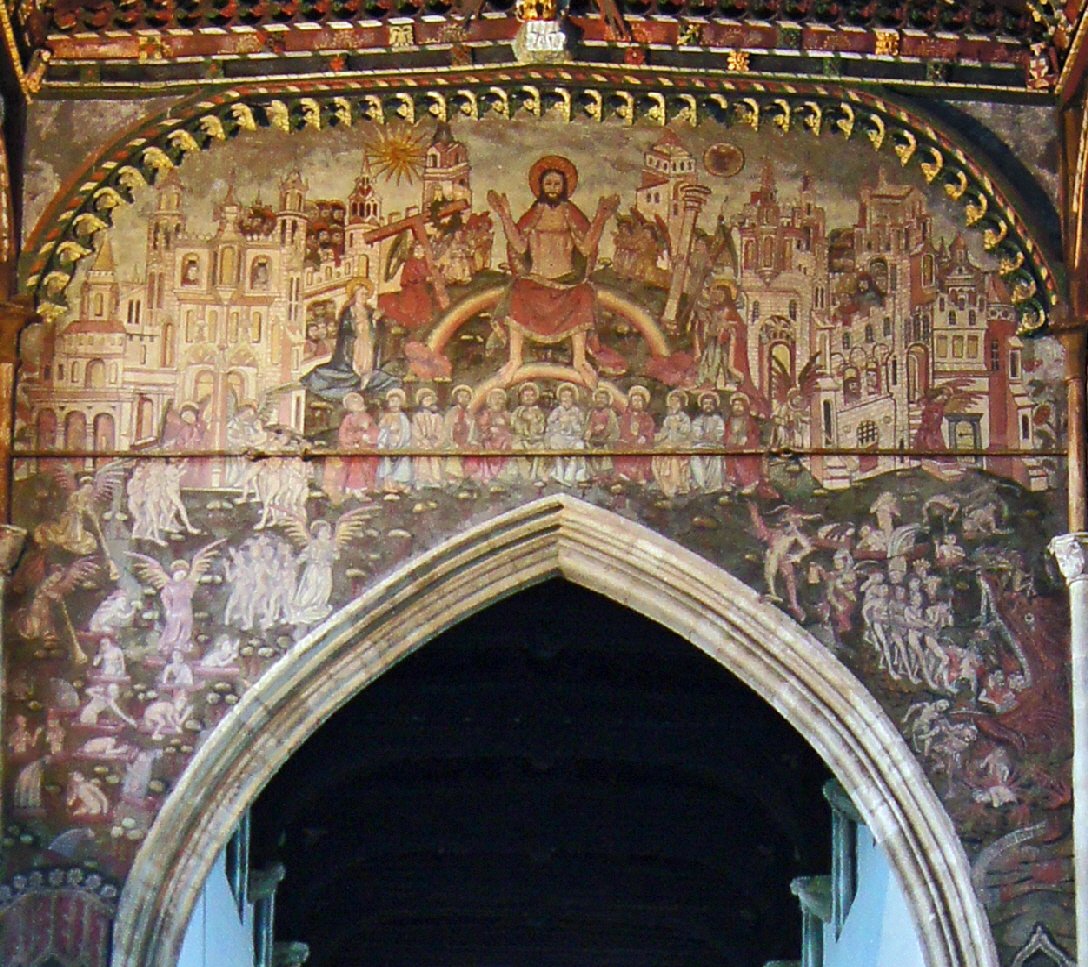 |
|||||||||||||||
|
The Doom painting in its entirety. Jesus sits with his angels and disciples in the central section. He is surrounded by the City of God. On the left the saved are being looked after by angels. On the right the damned are headed for the torments of Hell. I do not know why in England, at least, hell is invariably on the south side of a doom painting (the north being traditionally the “Devil’s Side”) but it is a fact. |
|||||||||||||||
 |
|||||||||||||||
|
Let’s look at the central (and least fun!) part of the painting. This is a chunky and robust Christ, displaying his wounds and seemingly with a rainbow beneath his feet and another behind him. To his left and angel holds a T-shaped cross; to his right another holds the spear used to pierce his side and the vinegar-soaked sponge that tormented his thirst. The disciples are seated below him. |
|||||||||||||||
 |
|||||||||||||||
|
This part of the south side shows part of the City of God. Note that the people in the lower part of the building are not nimbed so they are presumably saved souls of the ordinary sort. The angels, one with a long trumpet, and the other pointing towards the steps seem to be taunting the damned who are suffering the agonies of hell below them. Which is not very nice and in my view quite un-angelic. |
|||||||||||||||
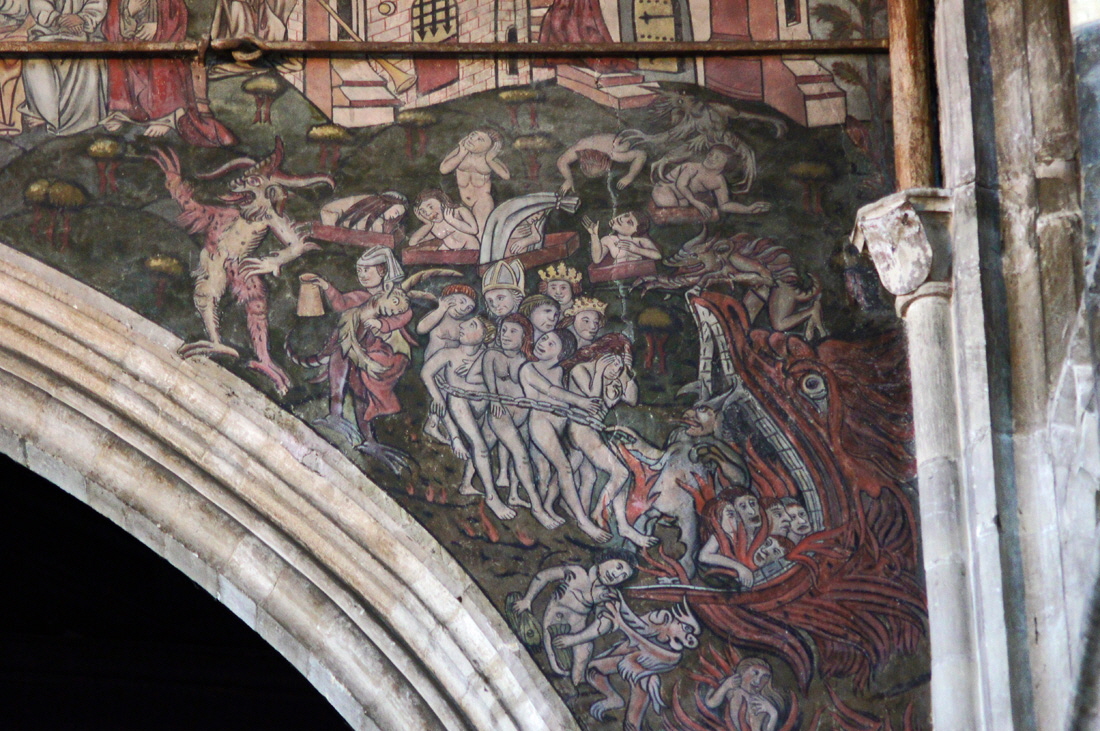 |
|||||||||||||||
|
As always, it is the damned that provide the entertainment. I often wonder how seriously the ordinary parishioners took these scenes? We almost accept as fact that everyone was terrified by the notion of the Last Judgment and the lurid descriptions of what awaited the sinner. Yet we have no real evidence for how they felt. Is it so unlikely that John Chandler might turn to William Mason and say “I see they’re trying to terrify us all again. What sort of idiots do they take us for?” I have a feeling that the peasants and town-dwellers of the day might have had their doubts about all this claptrap. Or I like to think they did anyway! Anyway, one of the things I like about this depiction is there’s a couple crowned kings in there, as well as a bishop. I bet they loved that over at the Cathedral! Note the sinners at the top of the scene are rising from their coffins. I am intrigued by the lady on the left with her headdress. She seems to be holding a flagon or jug of some sort towards some Price of Darkness whilst embracing a horned devil. She, I think is an ale-wife and I rather suspect that the painters had a quite specific ale-wife in mind! Purveyors of ale were the frequent butt of mediaeval In the bottom right the jaws of Leviathan devours its prey. |
|||||||||||||||
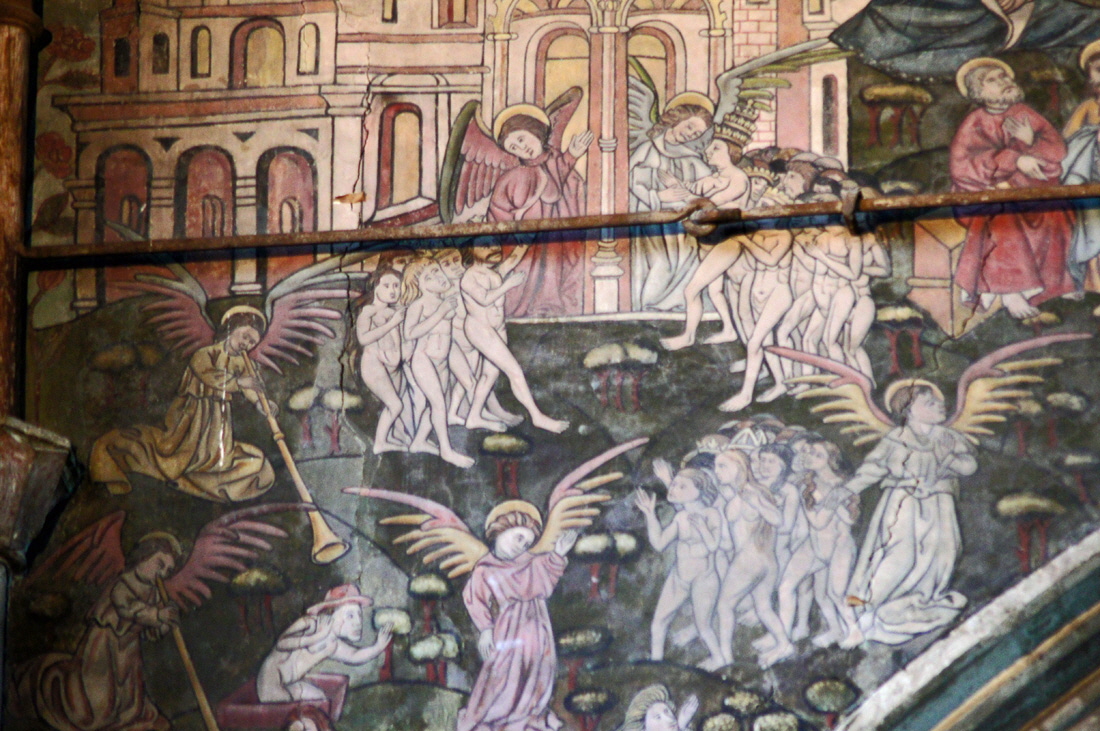 |
|||||||||||||||
|
On the north side the saved are welcomed into heaven by a couple of angels. Interestingly by the right hand doorway is a man with a three-layered crown. This, of course, is the traditional crown of a Pope. I suppose they felt they had to let him in. At that time, I doubt that he deserved it! |
 |
|||||
 |
|||||
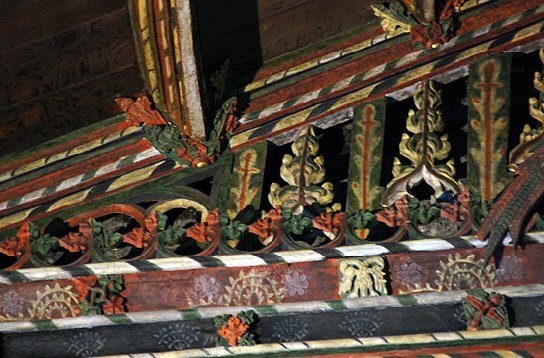 |
|||||
|
The ceiling area immediately to the west of the chancel arch has lovely painted woodwork. The three pictures above show the cross beam immediately above the doom painting. |
|||||
